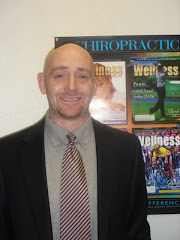Complementary and Alternative Medicine (CAM) is defined as a group of diverse medical and health care systems, practices and products that are not presently considered part of conventional medicine. According to a nationwide government survey, 36 percent of U.S. adults aged 18 years of age and over use some form of CAM. When prayer specifically for health reasons is included within the definition of CAM, the number of U.S. adults using CAM rises to 62%.
“These findings confirm the extent to which Americans have turned to CAM approaches with the hope that they would help treat and prevent disease and enhance quality of life,” said Stephen E. Straus, M.D., Director of the National Center for Complementary and Alternative Medicine.
The survey was administered to over 31,000 representative U.S. adults, and was conducted as part of the Centers for Disease Control and Prevention (CDC) 2002 National Health Interview Survey (NHIS). The survey included questions on 27 types of CAM therapies commonly used in the U.S. The results from the CAM portion of this study provide the most comprehensive and reliable data to date describing CAM use by the U.S. adult population.
Overall, the survey revealed that CAM use was greater among a variety of population groups, including women, people with higher education, those who had been hospitalized within the past year, and former smokers. This was also the first survey to yield substantial information on CAM use by minorities. What the survey showed was that a sizable percentage of the public puts their personal health into their own hands.
CAM approaches were most often used to treat back pain or problems, colds, neck pain or problems, joint pain or stiffness, and anxiety and depression. However, only 12% of adults sought care from a licensed CAM practitioner, suggesting that most people who use CAM do so without consulting a practitioner.
According to the survey, the 10 most commonly used therapies and approximate percent of U.S. adults using each therapy were: (1) Prayer for own health (43%), (2) Prayer by others for respondent (24%), (3) Natural products (19%), (4) Deep breathing exercises (12%), (5) Participation in prayer group for own health (10%), (6) Meditation (8%), (7) Meditation(8%), (8) Yoga (5%), (9) Massage (5%), and (10) Diet-based therapies – Atkins, Pritkin, Ornish, etc. (4%).
The survey also sought to determine why people use CAM. 55% of adults said they were most likely to use CAM because they believed that it would help when combined with conventional medical treatments. 50% thought CAM would be interesting to try. 26% used CAM because a medical professional suggested they try it, and 13% used CAM because they thought conventional medicine was too expensive. In contrast to previous studies, 28% of adults use CAM because they believed conventional medicine would not help them with their health problem.
The results of the survey reveal new patterns of CAM use among various population groups and provide a rich source of data for future research. The survey results provide a baseline for future surveys, as it establishes a consistent definition of CAM that can be used to track trends and prevalence of CAM use.
(Summary of NIH News Release, May 27, 2004; Health and Human Services Department (HHS); National Institutes of Health (NIH)
Subscribe to:
Post Comments (Atom)



No comments:
Post a Comment